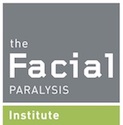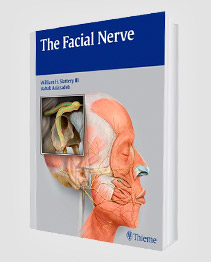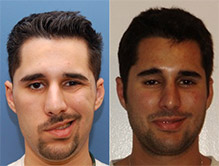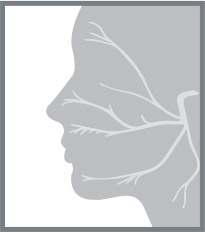Coronavirus (COVID-19) vaccine distribution is underway. Yet, as COVID-19 vaccine distribution continues, medical professionals will watch closely to determine the vaccine’s efficacy and safety in real world settings.
Clinical trials were used to evaluate the vaccine’s effectiveness in mitigating COVID-19 symptoms. However, there may be issues that crop up as the vaccine becomes generally available worldwide. One such issue that could develop: Bell’s palsy as a side effect of receiving the COVID-19 vaccine.
What Is Bell’s Palsy?
Bell’s palsy is a top cause of facial paralysis in the United States. It occurs due to a herpes strain that lives on the seventh facial nerve and results in facial paralysis or weakness that affects one side of the face.
Along with facial paralysis or weakness, common Bell’s palsy symptoms include jaw pain, headache, drooling and altered taste. In most cases, these symptoms disappear within a few days of onset. If Bell’s palsy symptoms linger, they can cause synkinesis, i.e., abnormal synchronization of facial movement.
Can Bell’s Palsy Occur As a Side Effect of a COVID-19 Vaccination?
The U.S. Food and Drug Administration (FDA) states that a COVID-19 vaccination can cause several side effects, including:
- Injection site redness and/or swelling
- Fever
- Fatigue
- Headache
- Muscle pain
- Chills
- Joint pain
- Nausea
- Swollen lymph nodes
- Difficulty breathing, a fast heartbeat, and other signs of a severe allergic reaction
To date, the FDA has not listed Bell’s palsy as a potential side effect of a COVID-19 vaccination. On the other hand, it is important to note that research has linked peripheral facial paralysis to neurological manifestations of COVID-19. Furthermore, the COVID-19 vaccine is new, and other side effects associated with the vaccine may be discovered in the weeks and months to come.
For people who experience any Bell’s palsy symptoms that linger for many months after onset, it is crucial to seek out medical assistance, regardless of whether they have received the COVID-19 vaccine. Without proper diagnosis or treatment, Bell’s palsy symptoms can escalate, to the point where they cause long-term facial paralysis. Conversely, by seeking out medical treatment, people can find out if they are dealing with Bell’s palsy or another form of facial paralysis and mitigate their symptoms before they cause permanent damage.
How Is Bell’s Palsy Diagnosed and Treated?
An ear, nose, and throat evaluation, neurologic testing, and other assessments are used to diagnose Bell’s palsy. These assessments are usually performed if a patient experiences Bell’s palsy symptoms that do not subside within eight months of onset.
If a patient is diagnosed with Bell’s palsy, different treatment options are available to address this issue. Initially, a doctor may recommend high-dose steroids (prednisone) and antiviral medications (Famvir or Valtrex) to treat Bell’s palsy. Or, if these medications do not deliver the intended results, Bell’s palsy surgery can be performed.
Selective neurolysis is a revolutionary Bell’s palsy surgery pioneered by Dr. Babak Azizzadeh, a Harvard-trained and globally recognized facial plastic and reconstructive surgeon. During selective neurolysis, Dr. Azizzadeh uses an intraoperative electromyography (EMG) to map out a Bell’s palsy patient’s facial nerves. He then decreases the activity of the facial nerves that hamper his patient’s ability to smile, frown, and produce other facial expressions and releases the platysma muscle that pulls the corner of the mouth down. The result: Dr. Azizzadeh delivers spontaneous reanimation of the face.
In addition to selective neurolysis, Dr. Azizzadeh offers Botox injections to Bell’s palsy patients. Botox injections can relax hyperactive muscles in the face, improve facial symmetry, and enhance the facial appearance.
Which Bell’s Palsy Treatment Is Right for You?
The ideal Bell’s palsy treatment varies based on the patient. If people experience long-lasting Bell’s palsy symptoms, they can meet with Dr. Azizzadeh to determine the best course of action.
Dr. Azizzadeh is dual board-certified in head and neck surgery and facial plastic and reconstructive surgery, and his unique expertise allow him to deliver comprehensive Bell’s palsy treatments. When Dr. Azizzadeh meets with a Bell’s palsy patient, he evaluates the patient’s symptoms and medical history. Dr. Azizzadeh then crafts a personalized treatment plan designed to help his patient alleviate their symptoms going forward.
Although the COVID-19 pandemic has made it difficult for patients to meet with Dr. Azizzadeh in person, virtual appointments are also available. Virtual consultations are nearly identical to in-person meetings, and they let patients discuss their Bell’s palsy symptoms with Dr. Azizzadeh in real time.
Following an in-person or virtual consultation, Dr. Azizzadeh can perform a Bell’s palsy treatment and track its results. Dr. Azizzadeh wants his patient to achieve the full results of treatment as quickly as possible. To accomplish this goal, Dr. Azizzadeh requests follow-up appointments with a patient throughout their treatment. These appointments allow Dr. Azizzadeh to monitor his patient’s progress. They also encourage a patient to share any treatment concerns or questions with Dr. Azizzadeh.
Explore Bell’s Palsy Treatment Options from Dr. Azizzadeh
The COVID-19 vaccine looks promising, but there is no telling how the vaccine will affect people. If people experience Bell’s palsy symptoms now or in the future, and these symptoms persist for eight months or longer, Dr. Azizzadeh is available to provide assistance. To learn more about Bell’s palsy treatment or to request an in-person or virtual consultation with Dr. Azizzadeh, please contact The Facial Paralysis Institute online or call us today at (310) 657-2203.
Request your consultation with Dr. Azizzadeh today
Call us at (310) 657-2203 to schedule an appointment.
Schedule a Consultation




